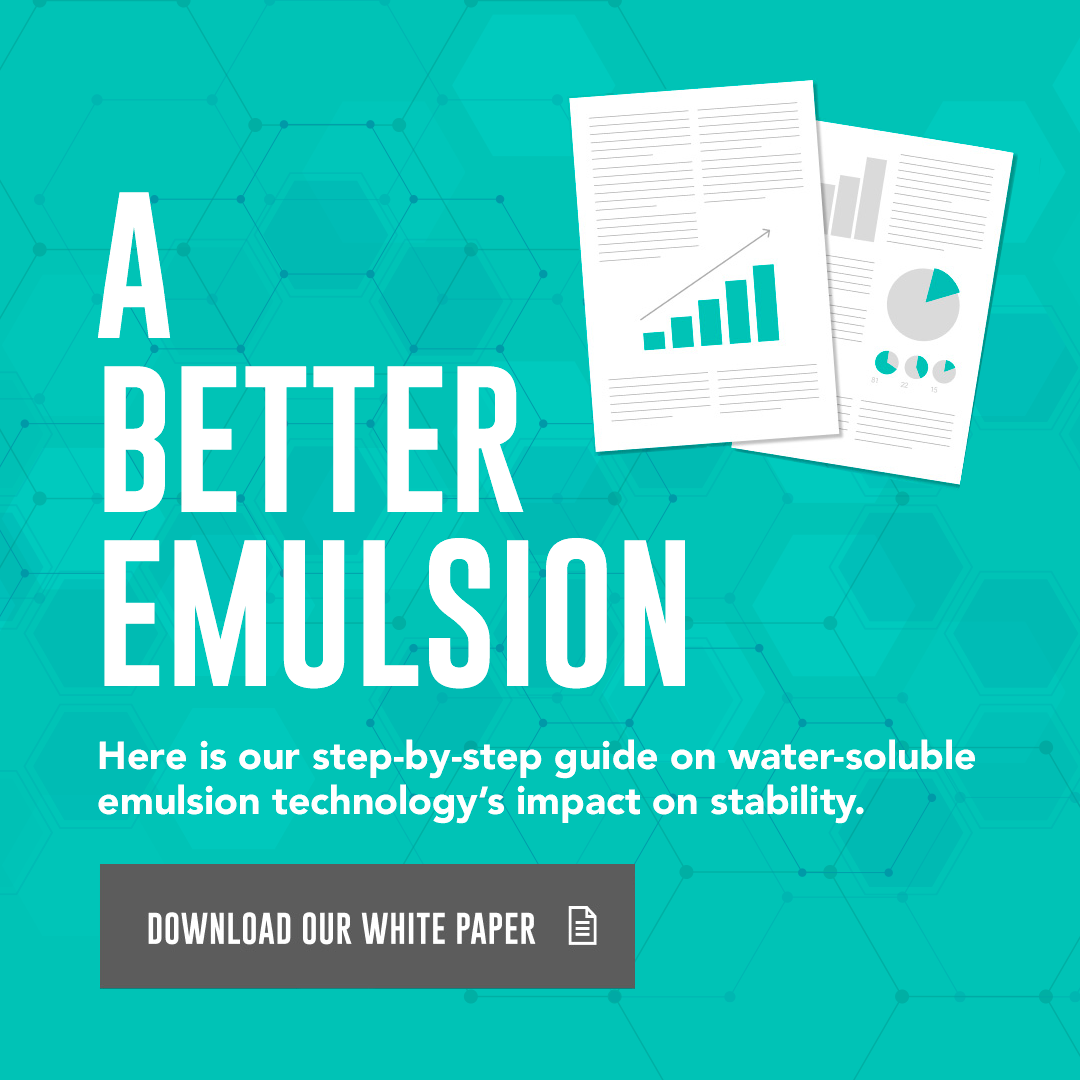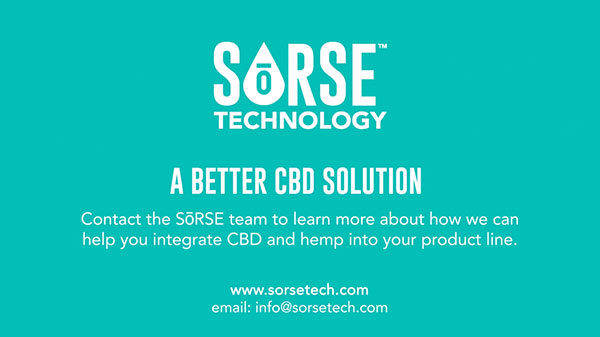For those who are not familiar with emulsions, they are defined as transformations and dispersions of minute droplets from one liquid into another that are not soluble. A great example of an emulsion is salad dressing. The oil in the dressing is lighter than the vinegar, which is why it rises to the top. To get the oil to mix with the vinegar, agitation in the form of vigorous shaking will get the two ingredients to mix – but they will eventually separate. Similarly, oil and water do not play well with each other, which is why using a cannabinoid emulsion for food and beverages is great option for companies producing infused products.
While it is common for product developers to use emulsions when working with tricky oil-based ingredients, not all emulsions are created equal. While emulsion technology has improved, there are still challenges working with cannabinoids such as negative sensory attributes, shelf life, homogeneity, scalping, and the ability to scale. Here are some tips for the evaluation process.
TIP #1: Know Exactly What You Are Looking for in Your Emulsion
When you start evaluating emulsions, you should already know what desired effect and qualities you want, as well as the services you need to get your product to market.
Do you want your flavor profile to be clean or earthy? Are you looking for the Entourage Effect, where the cannabinoids and the terpenes work synergistically? In terms of dosage, will your product be micro-dosed or offer a high milligram count? What product certifications are important to you – organic, vegan, or kosher? Lastly, how and where will your product be produced, and what kind of support will you need through the process?
Throughout the evaluation process, keep your requirements front of mind so you get the right emulsion for your product.
TIP #2: Consider Sensory Profiles – Taste, Smell, Appearance, Texture
Whether you are producing a food, beverage, or personal care product, the consumer’s sensory experience is an important consideration. With food and beverage, if the product doesn’t smell, taste, or look good, they won’t buy it. With personal care, if the product doesn’t feel or smell good, they won’t put it on their body. There are some negative sensory attributes associated with cannabinoids; how you work with those attributes depends on your target consumer and what sensory experience they are looking for.
Some consumers want their product to taste like the flavor that’s on the label without any hint of cannabinoid flavor, while others like the sensory attributes cannabinoids carry. Knowing this will help a product developer decide if they want to use an emulsion featuring an isolate which will have clean flavor profile or a broad spectrum emulsion which will feature grassy, earthy, herbaceous notes. It also important to remember that organic, all-natural, kosher or other certifications also impact flavor profile, shelf life, production timeline as well as cost.
Tip #3: Evaluate Ingredients, Stability, Homogeneity, and Shelf Life
Getting your infused product on a store shelf is the ultimate goal, but you also need to look at the quality of the emulsion, which includes ingredients, stability, homogeneity, and shelf life. These attributes are critical for providing the consumer with a consistent experience. A top quality emulsion begins with high quality raw ingredients. Ask your emulsion supplier about their active and non-active ingredients and review the Product Data Sheets, the Safety Data Sheets, and the Certificate of Analysis (COA) with them. Ask how they test inbound and outbound material, if they utilize internal and third party testing.
When working with cannabinoids, it’s essential that the emulsion you choose is stable and homogeneous, meaning that the cannabinoids do not separate from the water over time and are evenly dispersed in the emulsion. Proven stability and homogeneity are critical because it will ensure accurate label claims. Your emulsion supplier should be able to verify stability and estimate the shelf-life of their ingredient. Ask how they test for stability, and make sure they provide documentation that verifies the potency on the COA.
Tip #4: Discuss How Packaging Impacts the Emulsion
Packaging should be considered at the beginning stages of product development because it will play an important part in working with a co-man for production and scale up. Make sure your supplier understands how your selected packaging will interact with the cannabinoids in the emulsion.
Cans are a popular and familiar packaging solution, but any product developer knows that where there are cans, there is scalping. Scalping is when an ingredient gets absorbed into the can lining, resulting in potency loss. Scalping and other factors such as manufacturing processes that result in potency loss can be mitigated by careful planning on behalf of your supplier and production partners.
To achieve accurate dosing that matches your label, you need to factor in potency loss early on. Most producers will overdose their product and account for loss when they begin production. Guidance should be provided by your production partner.
TIP #5: Choose an Emulsion Made for Scaling
Just like any other ingredient in your product, the emulsion should be easy to incorporate into the manufacturing process. This will allow for integration into almost any product format, a seamless transition from small batch to commercial scale production, and ease of use for co-manufacturers, which leaves less room for error. The bottom line is that an emulsion that is easy to incorporate into a production process will also be easy to scale. As you evaluate emulsions, don’t be afraid to ask what support you will need to scale as well as how future FDA rulings might impact your finished product.
Selecting the emulsion to infuse your product with will be the single-most important decision you make during formulation because it impacts the entire product development process as well as the consumer’s experience with your product. Taste, stability, product consistency, dosing and scalability are all incredibly important attributes in any emulsion. Throughout this evaluation process, remember that you are not only looking at the quality of the emulsion; you are also choosing a strategic partner that can support you from concept to commercialization.
The team at SōRSE offers liquid and powder emulsions designed for easy integration into food, beverages, and personal care products as well as guidance through every stage of product development. If you are looking for a high-quality emulsion powered by a team of experienced food scientists and product developers to get your product to market fast, come to the SōRSE.





